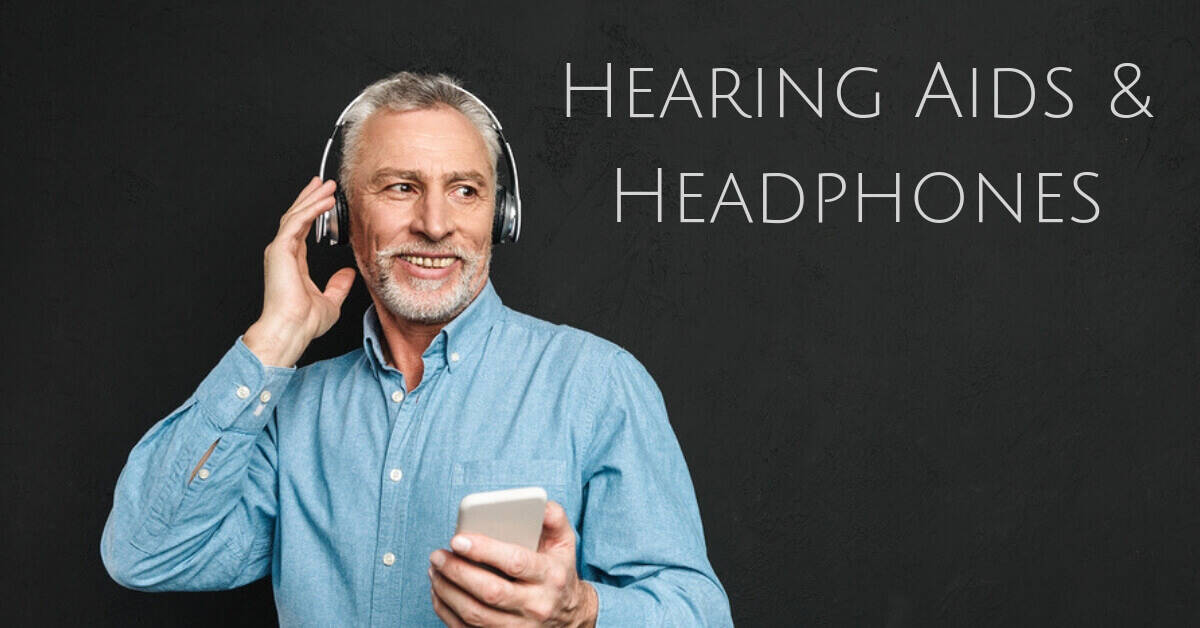
- How to Properly Clean Your Hearing Aids - April 15, 2024
- How to Handle Ear Infections With Hearing Aids - April 5, 2024
- Strategies for Working Professionals with Hearing Loss - March 27, 2024
“How can I wear headphones to listen to music if I have a hearing aid?” is a question that often arises among folks utilizing hearing instruments. For most users, this is really a two part question. One is of compatibility and comfort, and the other is of attribution to hearing loss.
Depending on which hearing devices people wear, they may find headphones impossible to put on. If the headphones don’t sit properly around the hearing aids or if they’re too close to the devices’ mic, there may be issues with the mic picking up sound or problems with audio feedback. Listening to headphones too loudly or too long can damage hearing in all users, but audiologists say that, in general, headphone usage with hearing aids doesn’t post any risk as long as you choose the right types of headphones that help prevent hearing loss. With consultation from an audiologist and a little experimentation, people with hearing aids can find the right headphone fit.
These Hearing Instruments May Be Limiting, But There Are Options
The type of hearing aid you use is the most critical factor in determining what type of headphone to purchase. Hearing devices can be separated into several key varieties, and they don’t all work equally well with headphones. The following types may be restrictive in finding compatible headphones, but there are still options in finding the right fit.
Behind-the-ear (BTE) and receiver-in-the-canal (RIC) are two of the most common devices that may be limiting when it comes to finding the right headphone, mainly due to the fact that their main compartments sit outside the ear, which cause not only issues of comfort, but also those of those audio feedback from picking up exterior sounds. In-the-ear (ITE) hearing aids, custom-fit instruments that fill up the inner ear bowl, also face similar challenges as the microphone also sits close to the surface of the ear, which cause them to pick up outside noise.
Despite these minor roadblocks, people using BTE, RIC, or ITE hearing devices can still find headphones that work for them. The best fit for folks using these type of devices would be over-the-ear style headphones. (Consumer Reports’ buying guide dives deep into different types of headphones.) The pivotal factor is to find a pair of headphones that are comfortable and holds the speakers a reasonable distance away from the hearing aid microphone. Audiologists recommend a distance of 1 centimeter or a little more in order to avoid feedback.
More Headphone Options with These Hearing Device Types
People using in-the-canal (ITC), completely-in-the-canal (CIC), or invisible-in-the-canal (IIC) hearing aids have more buying options when it comes to headphones. Those with ITC hearing instruments can use both on-ear headphones and over-the-ear headphone types. Many users find on-ear headphones more compatible as they’re lighter, making them easy for on-the-go usage, and as the name suggests, these types fit on the ear instead of over the ear, making it more comfortable. Perhaps the only downside is they tend to let more ambient sound in.
Those using CIC or IIC hearing devices have even more headphone choices as both types fit deeply inside the ear. The safest option for CIC users are still on-ear and over-ear headphones, but because CIC hearing instruments sit deep enough inside the ear, people using this type may also be able to wear earphones that fit inside the ear. IIC hearing aid users have the most choices as these devices are so deeply imbedded within the the ear, allowing the user to choose almost any type of headphones, even earbuds. The main challenge for people with IIC devices is a matter of narrowing down your options.
Bone conduction headphones may be an option regardless of which type of hearing aid people use as they bypass the middle ear and translate the sound via vibrations through the skull, as opposed to the hearing instrument amplifying the sound. Bone conduction headphones sit outside of the ear, making it safe, reliable, and most of all comfortable.
Consult and Experiment with Headphone Options Before You Buy
With any type of purchase, it is always best to research, test, and compare products. This is especially important when thinking about buying headphones that are most compatible with your hearing device. Depending on if one has hearing loss in the low frequencies or across a broader range of frequencies, certain headphone types might be more or less beneficial.
Are you concerned about hearing loss? It is important to consult with our team at Hearing Aid Specialists of the Central Coast to test your hearing and learn about hearing aid options that are best for your particular case. We can lead you in the right direction to narrow down which type of hearing aids to test out before purchase. Be on your way to find the hearing aids that suits your needs best!
For more consultation on hearing aids, contact our team at Hearing Aid Specialists of the Central Coast.
